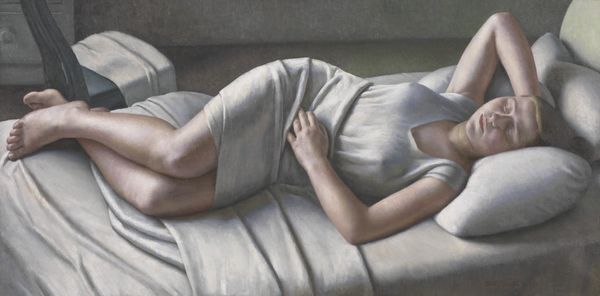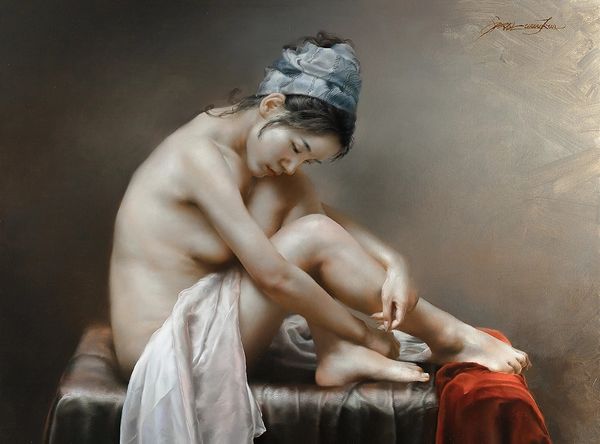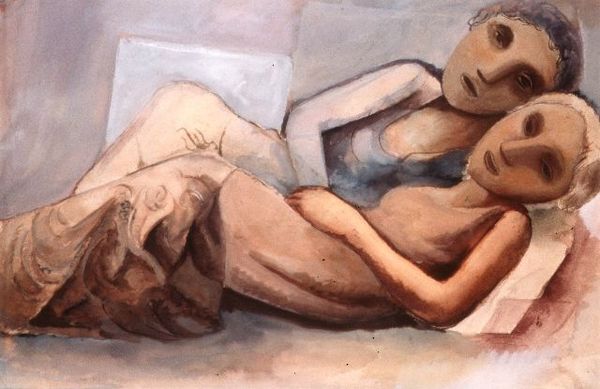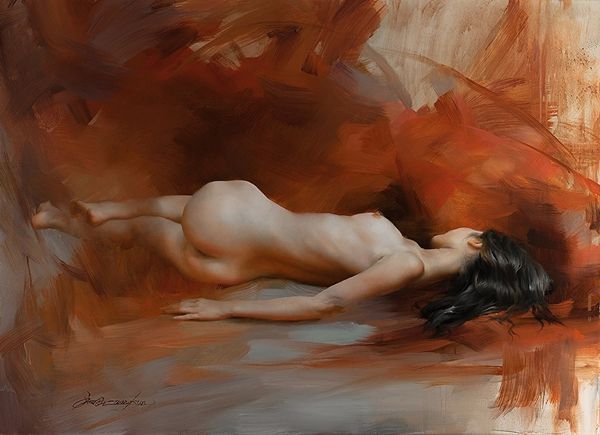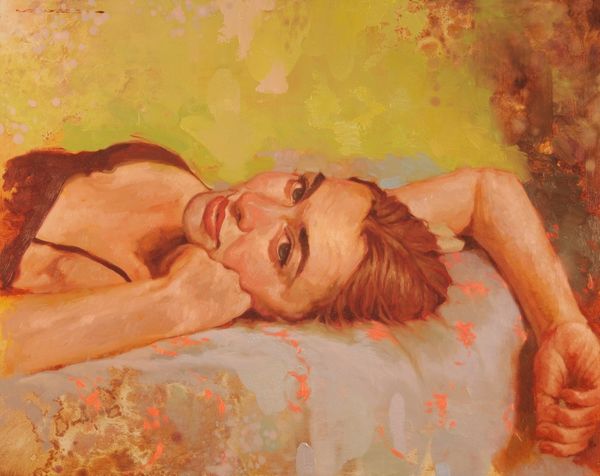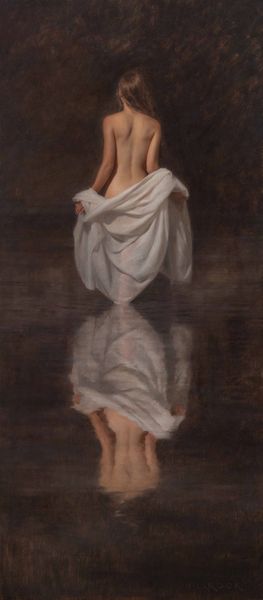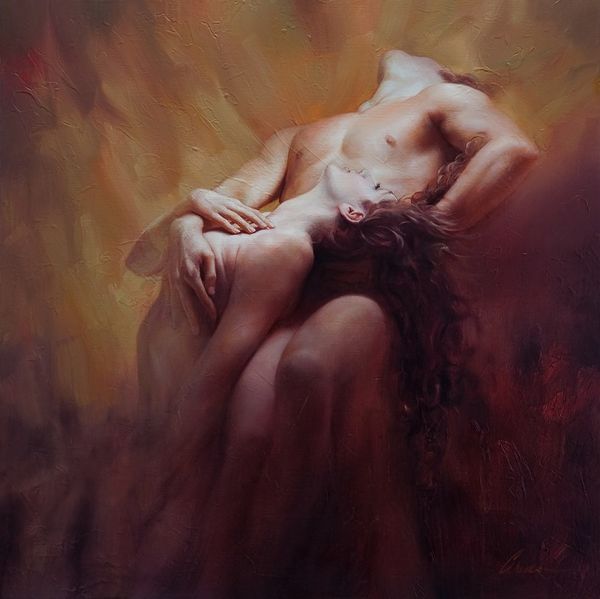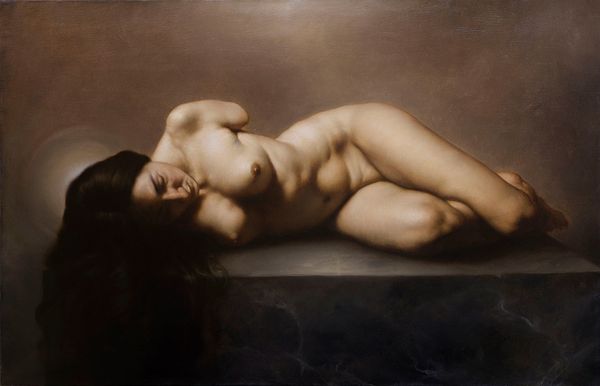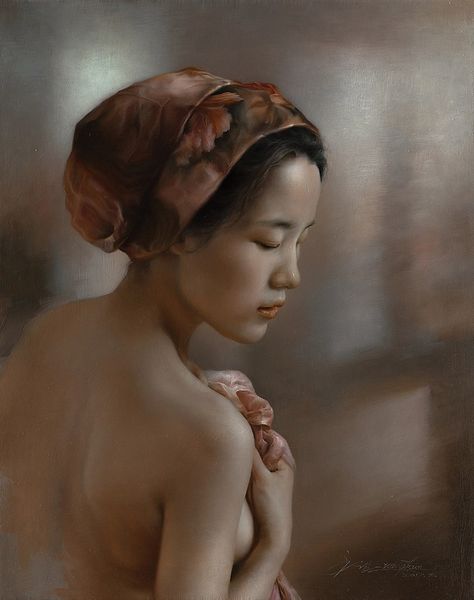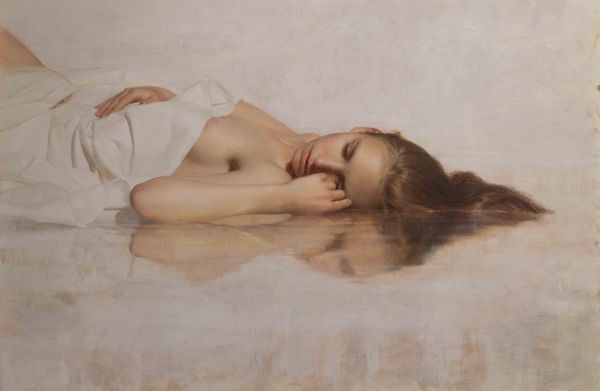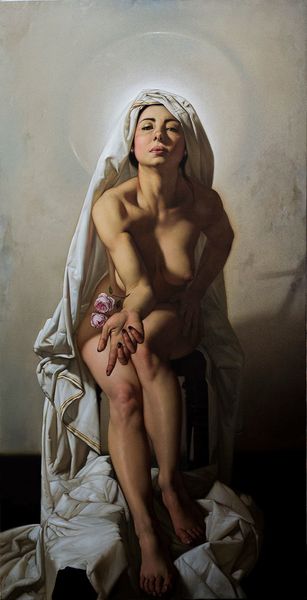
painting, oil-paint
#
figurative
#
painting
#
oil-paint
#
figuration
#
genre-painting
#
nude
#
realism
Copyright: Modern Artists: Artvee
Editor: Here we have Kun Wang’s oil painting, "White Satin." There’s no date provided. The subject is a reclining nude, partially draped in the titular white satin. It has a serene and almost melancholic atmosphere. How do you interpret this work? Curator: The serenity you mention is certainly present. I think the crucial aspect here lies in considering the historical and societal context in which nude paintings are often created, particularly the power dynamics involved. The model, though seemingly peaceful, is presented for the viewer's gaze. Considering the lack of dating, what contemporary discussions around the female gaze, agency, and representation do you think we could explore using this painting? Editor: So, while the technique and realism are beautiful, we need to think about the perspective of the artist and viewer. Is it about celebrating the human form or something more problematic? Curator: Precisely. How does the artist’s perspective, and potentially a male gaze, impact the representation of the female body? Who gets to decide what is considered beautiful or acceptable? And furthermore, how do factors like race and ethnicity intersect with these standards of beauty? Editor: I see what you mean. The drape of the satin almost feels like an attempt at modesty while simultaneously drawing attention to what's revealed. It brings to mind questions about cultural standards and censorship, doesn’t it? Curator: Yes. We might also want to look at this figure within an intersectional lens, perhaps exploring stereotypes or representations specific to the model's ethnicity, which appears to be Asian. Is the "exoticizing" or objectifying gaze at play here, and if so, how? This raises difficult but necessary questions. Editor: That makes me think about how we can view paintings like this and appreciate the artist’s technical skill while also remaining critical of the power structures that are inherently part of the composition. Thank you, this was really helpful! Curator: My pleasure! Art is powerful not only for its aesthetic qualities, but also for the complex conversations it sparks about who we are and the societies we inhabit.
Comments
No comments
Be the first to comment and join the conversation on the ultimate creative platform.
